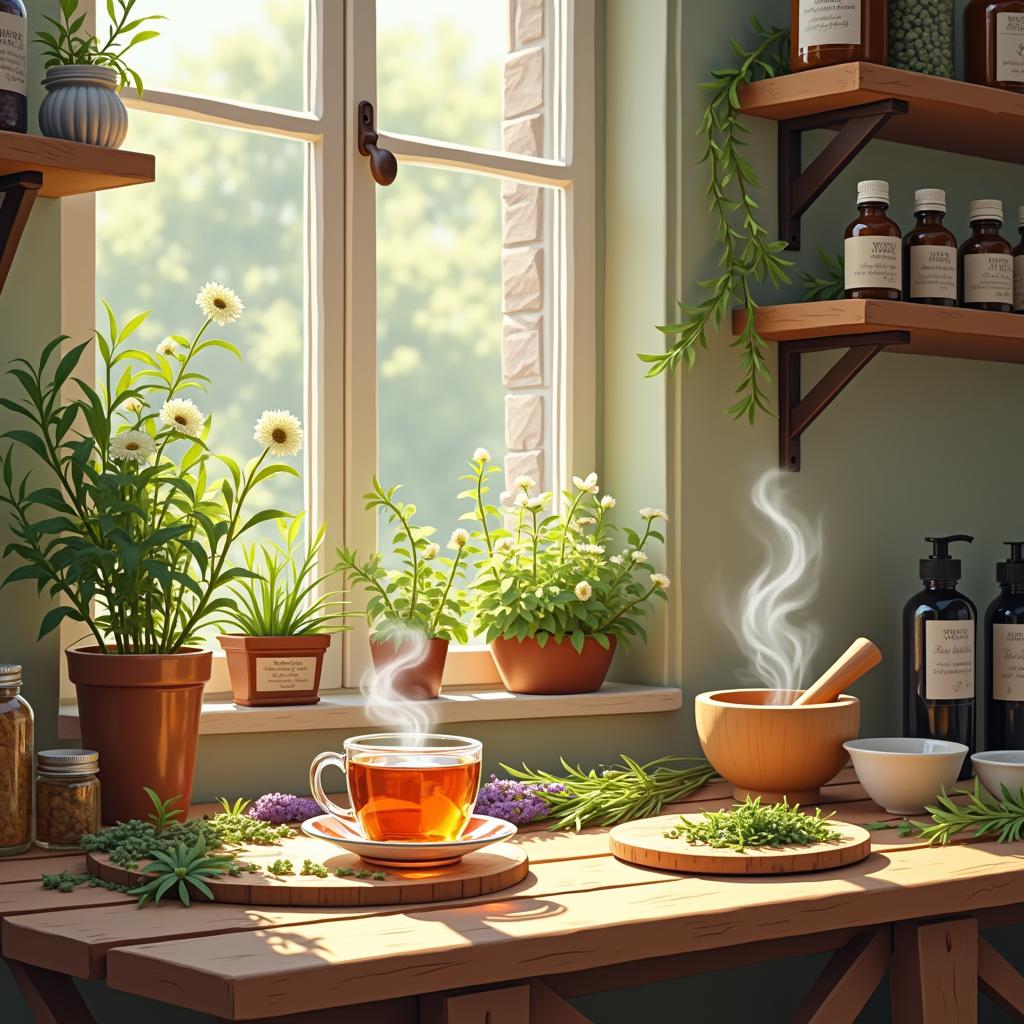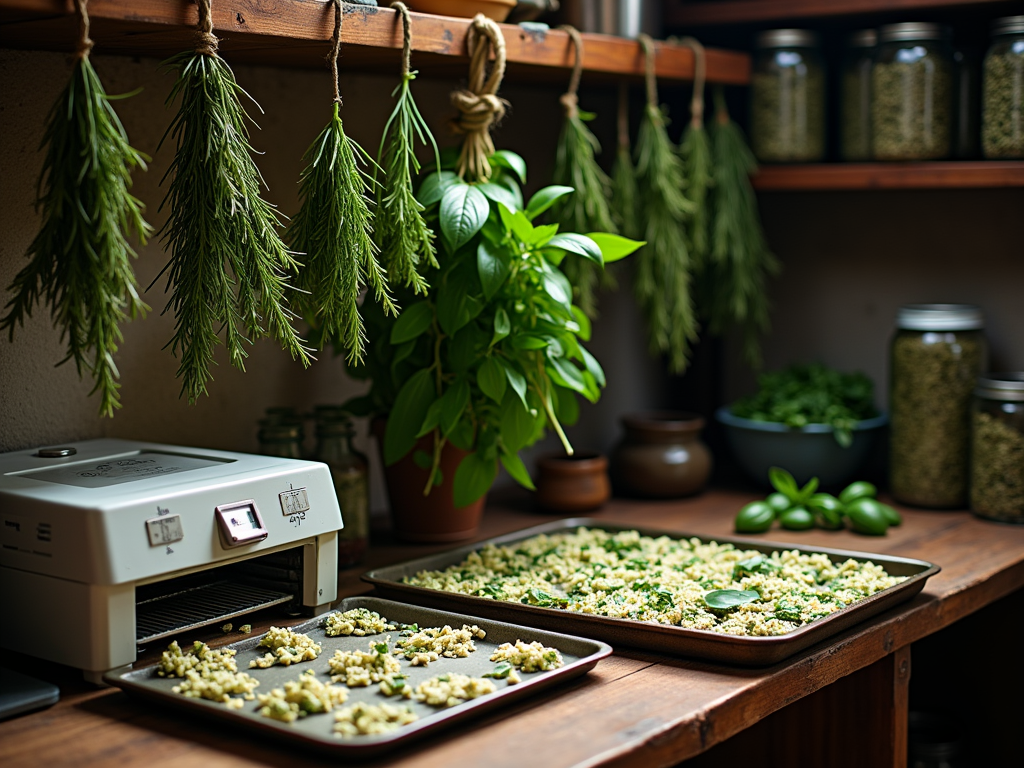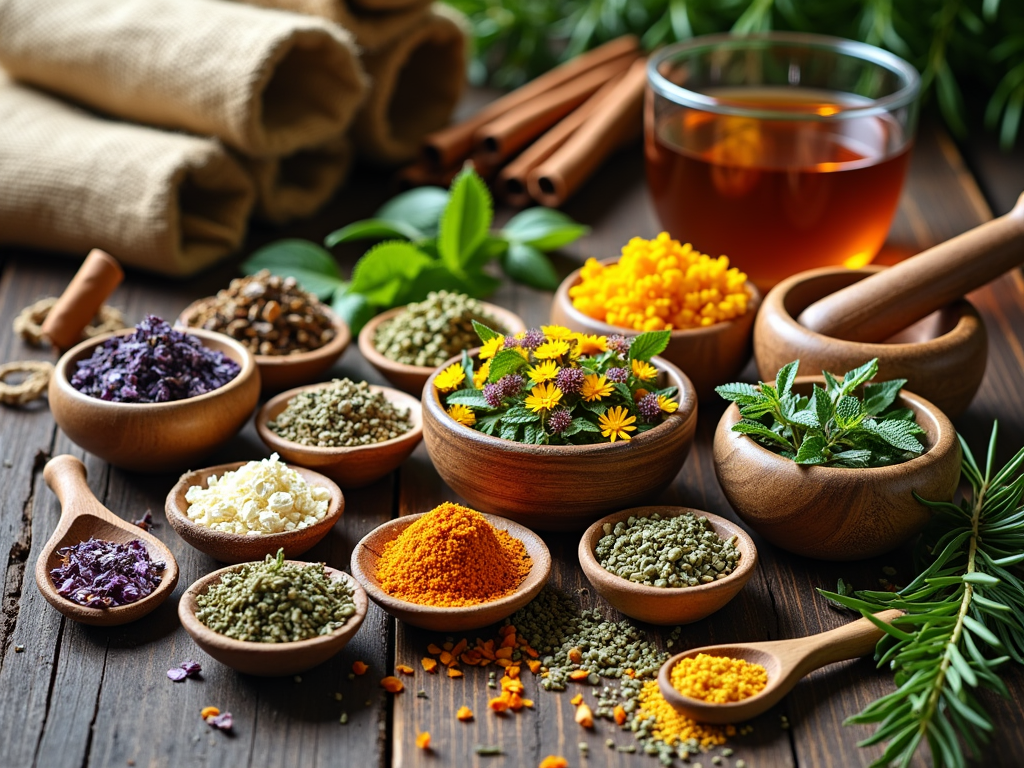
Making herbal remedies begins with selecting or cultivating high-quality medicinal plants to ensure effectiveness and safety. Mastering harvesting, drying, and preparation techniques like infusions, tinctures, and salves allows you to create natural options for health support.
Key Takeaways
- Growing medicinal herbs at home ensures purity and eliminates exposure to unwanted chemicals.
- Using proper drying and storage methods, such as air drying or freezing, maintains an herb’s beneficial properties.
- Herbal teas (infusions) and decoctions extract essential compounds from leaves, flowers, roots, and bark.
- Tinctures and infused oils provide concentrated extracts used in remedies like salves.
- Safe herbal use requires careful attention to dosage, potential allergies, and interactions with medications.
Growing and Harvesting Your Own Medicinal Herbs
Fresh, homegrown medicinal herbs offer stronger potency, better flavor, and complete control over how they’re grown. Store-bought herbs can be expensive and sometimes contain pesticides or additives. A personal herb garden ensures you get the best quality without the extra cost.
Easy-to-Grow Herbs for Beginners
Some herbs require minimal attention and thrive in most conditions:
- Mint – Spreads quickly, enjoys moist soil, and is best grown in containers to prevent spreading too much.
- Chamomile – Thrives in full sun but tolerates some shade, producing delicate flowers perfect for tea.
- Lemon Balm – Enjoys both full and partial sun, offering a fresh citrus scent.
- Calendula – Needs full sun and well-draining soil, with bright yellow-orange edible flowers.
- Lavender – Prefers full sun and slightly alkaline soil (pH 6.5-7.5), requiring decent drainage.
Most herbs need at least six hours of sunlight daily. Keep soil well-drained and amend heavy soil with compost. Water deeply but less frequently to prevent root rot. Seeds can take time to germinate—lavender needs 14-21 days, whereas mint takes 10-15 days. Starter plants offer a head start.
Timing matters when harvesting herbs. Pick leaves while they’re young and tender throughout the season. Flowers should be gathered as they start to bloom, and roots do best when harvested in early spring or fall. Always harvest in the morning after the dew has dried, right before flowering, for the highest potency.
How to Properly Preserve Herbs for Long-Term Use
Best Methods for Preserving Herbs
Keeping herbs fresh for long-term use means retaining their essential oils, which hold the medicinal properties. These methods ensure they stay potent for months.
- Air drying: Tie herbs in small bundles and hang them in a cool, dark, ventilated space. This takes about 1-3 weeks, depending on humidity levels.
- Food dehydrator: Set it between 95-115°F (35-46°C) for a quick and even drying process. Thin leaves dry in a few hours, while thicker ones may take a little longer.
- Oven drying: Spread herbs on a baking sheet and place them in an oven at its lowest setting (below 170°F/77°C). Prop the door open slightly to release moisture. This can dry herbs within a few hours, though some potency may be lost.
- Freezing herbs: Chop them up and freeze them in ice cube trays with water or oil. You can also freeze whole leaves on a baking sheet before transferring them to a sealed bag.
Proper Herb Storage
After drying, store herbs in airtight containers away from heat, light, and moisture. Glass jars with tight-fitting lids work best. Keep them in a cool, dark place, and they’ll retain their quality for 6-12 months. Label each jar with the name and drying date so you know when it’s time for a fresh batch.

Making Herbal Teas, Tinctures, and Oils: A Beginner’s Guide
Herbal Infusions and Decoctions
Infusions, commonly known as teas, are the easiest way to extract the medicinal properties of herbs. For a basic herbal tea, steep 1-2 teaspoons of dried herbs or 2-4 teaspoons of fresh herbs per cup of hot water. Leaves and flowers should steep for 5-15 minutes, while tougher parts like roots and bark need 20-30 minutes.
Decoctions work better for tougher plant materials like roots, barks, and seeds. Instead of steeping in hot water, these require simmering. Use about one ounce of dried herb per quart of water and simmer for 20-45 minutes to draw out the beneficial compounds.
Tinctures, Oils, and Salves
Tinctures provide a concentrated, long-lasting herbal extract. Use 80-100 proof vodka or brandy to extract compounds from plants. A good ratio is 1 part dried herb to 5 parts alcohol or 1 part fresh herb to 2 parts alcohol. Store in a glass jar, shake daily, and let it macerate for 4-6 weeks before straining.
Infused oils extract herbal properties into a carrier oil. The slow method involves steeping herbs in oil for 4-6 weeks, while a quicker method warms herbs in a double boiler for 2-4 hours. To make salves, blend infused oil with beeswax—typically 1 part beeswax per 4-8 parts oil—for a spreadable, skin-healing product.
Capsules, poultices, and additional herbal remedies can further support natural wellness. I also recommend checking out natural remedies for common ailments if you’re looking for more ways to use herbs effectively.
Balancing Safety and Effectiveness in Herbal Medicine
Understanding Herbal Safety
Herbal remedies offer natural relief, but they’re not without risks. Some people may experience allergic reactions to certain herbs. A simple patch test can help avoid skin irritation—apply a small amount of the herbal preparation to your inner arm and wait 24 hours. If redness or itching appears, that herb may not be right for you.
Medication interactions are another concern. Many herbs can amplify or weaken the effects of prescription drugs. For example, St. John’s Wort can reduce the effectiveness of antidepressants and birth control pills. It’s essential to consult a healthcare professional before using herbal remedies, especially if you’re pregnant, breastfeeding, or taking medications.
Getting Dosage Right
Using the correct dosage is key to ensuring herbal effectiveness. Too little may not provide benefits, while too much can cause unwanted effects. Pay attention to recommended ratios and measurements:
- Tinctures – Typically, 1 to 2 milliliters (about 30 to 40 drops) per dose.
- Teas – Use one teaspoon of dried herbs per cup of water. Steep for 5 to 10 minutes.
- Salves and creams – Apply sparingly until you know how your skin reacts.
Precise measurements make a difference. Start with lower doses and adjust based on your body’s response. Herbal remedies can be powerful, and careful use is the best way to balance safety and effectiveness.
Where to Source High-Quality Herbs If You’re Not Growing Them Yourself
How to Identify High-Quality Dried Herbs
Finding good dried herbs starts with a few key indicators. Freshness matters. Look for herbs with vibrant color and a strong, natural aroma. If they smell weak or have lots of stems and crushed dust, they’ve likely lost their potency. The texture also plays a role. Whole leaves, flowers, or roots maintain their therapeutic properties better than overly processed powders. Always check for signs of mold or moisture—quality herbs should be completely dry to the touch.
Where to Buy Reliable Organic Herbs
Not everyone has the time or space to grow their own herbs, but that shouldn’t mean settling for low-quality options. Reputable suppliers focus on organic herbs and sustainable harvesting methods to ensure potency and purity. When sourcing herbs, stick to companies that specialize in ethical and high-quality products.
Some trusted names for buying dried herbs include:
- Mountain Rose Herbs – Known for high sourcing standards and sustainable practices.
- Starwest Botanicals – Offers a broad selection of organic and wildcrafted herbs.
- Frontier Co-op – A strong focus on organic and fair-trade options.
Whether purchasing online or from a local shop, always verify that the herbs come from reputable suppliers. Look for organic certification, transparent sourcing details, and customer reviews. Taking these steps ensures that the herbs you use for remedies are as effective as possible.

Sources:
The Modern Herbal Dispensatory: A Medicine-Making Guide. Thomas Easley and Steven Horne.
Rosemary Gladstar’s Medicinal Herbs: A Beginner’s Guide. Rosemary Gladstar.
Making Plant Medicine. Richo Cech.
Medical Herbalism: The Science Principles and Practices of Herbal Medicine, David Hoffman.
